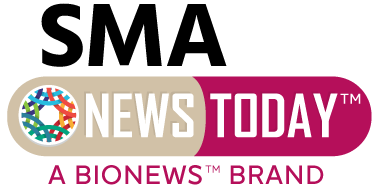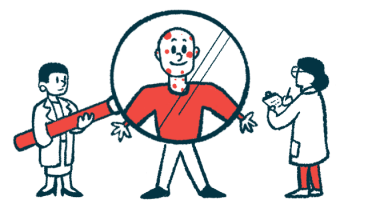Speech therapy for SMA
Last updated June 13, 2025, by Susie Strachan

Spinal muscular atrophy (SMA) is a neuromuscular disease that primarily affects motor neuron health. Motor neurons are specialized nerve cells that control movement.
When motor neurons are damaged or don’t function properly, muscles — including those in the mouth, throat, and chest — can weaken, making speaking, breathing, and swallowing harder.
Speech therapy for SMA can help manage this through targeted breathing and swallowing exercises and using tools such as alternative communication devices, which can help improve your quality of life.
What is speech therapy?
Speech therapy is a healthcare service that assesses, diagnoses, and treats communication and swallowing difficulties.
Provided by a speech therapist (also called a speech and language pathologist), this type of therapy helps people develop or regain skills related to:
- speaking
- understanding language
- expressing thoughts
- social communication
- swallowing safely.
Role of speech therapy in SMA
Meeting with a speech therapist soon after receiving an SMA diagnosis can help you understand potential issues and begin interventions early.
Early diagnosis, often through newborn screening or genetic testing, can allow for prompt therapy that supports communication, feeding development, and motor functioning.
While not everyone living with SMA will have difficulties speaking or swallowing, these issues can arise as the condition progresses.
Speech therapy aims to:
- help you form words more clearly and effectively, even if muscle weakness makes precise movements difficult
- improve breath control for projecting your voice and producing speech that others can easily understand
- strengthen the muscles involved in swallowing, reducing the risk of choking
- make eating and drinking safer and more comfortable.
Benefits of speech therapy for SMA
Speech therapy can meaningfully improve the lives of people with SMA at every stage, whether they are toddlers learning their first words, children and teens communicating at school, or adults working to maintain their ability to connect with others.
Exercises to improve jaw and throat strength can enhance speech clarity and make eating and drinking safer and more comfortable.
For swallowing difficulties caused by SMA (dysphagia), therapists may recommend specific foods or techniques that make meals easier and more enjoyable.
Speech therapists may also work with an occupational therapist to help you maintain and improve upper extremity coordination for tasks like eating and drinking.
Speech therapy can also benefit caregivers. Therapists can provide practical advice on managing communication and swallowing difficulties, from encouraging conversations to preparing meals that are easier to eat.
This support can improve the caregiving experience for both you as a caregiver and the person you care for.
Common techniques used in speech therapy for SMA
The main focus of speech therapy in SMA is strengthening the muscles involved in speech and swallowing and supporting breath control for clear communication.
Exercises may include:
- tongue and lip exercises to improve control and clarity of speech
- slowing down speech by carefully enunciating syllables or pausing between words for better comprehension
- breathing exercises, including diaphragmatic breathing, to improve breath support and voice projection, enabling sustained speech.
When speech becomes strained or difficult, speech therapists may recommend augmentative and alternative communication devices, which can range from low-tech options like picture boards to advanced devices such as text-to-speech apps, speech-generating devices, or eye-tracking technology.
Your first appointment
When you first meet with a speech therapist, they may perform tests to assess your swallowing and speech, such as taking a type of X-ray while you eat or having you consume barium-infused liquids or cookies. These can help them understand how your muscles are functioning.
Based on these results, they will create a personal therapy plan that can be adjusted as SMA progresses.
In some cases, specialized equipment may be recommended to support communication or swallowing.
For example, respiratory support interventions, such as ventilators or cough assist machines, may be suggested to address breathing difficulties. These devices improve lung function, reduce the risk of respiratory infections, and provide sufficient airflow for speech and swallowing.
Similarly, feeding tubes or swallowing aids may be recommended to help with safe swallowing, preventing choking, and ensuring adequate nutrition.
Speech therapy can be effective when integrated with the care of other healthcare professionals. A multidisciplinary team, including physical therapists, occupational therapists, and SMA specialists, can provide more comprehensive support.
Speech therapy for different age groups
Speech therapy can help with communication and swallowing difficulties across all ages and types of SMA.
Early intervention is critical for infants and toddlers with SMA type 1, particularly in supporting feeding and pre-verbal communication skills. In this type of SMA, speech development is often very limited, with communication relying on eye movements and guttural sounds.
For young children with SMA, therapy can include strengthening oral muscles, establishing feeding routines, and promoting vital early communication techniques.
As children grow, speech therapy can work on improving speech clarity and meeting communication needs in school settings. While severe speech impairments may occur, they do not typically affect intellectual abilities or language understanding.
For adults with SMA type 4, speech therapy can help manage the evolving challenges of speech clarity, swallowing, and breath support, providing strategies to adapt communication through alternative means.
Challenges in speech therapy for SMA
While speech therapy offers benefits, there are a few obstacles to consider.
As SMA progresses, therapy plans should be evaluated and adjusted to meet evolving symptoms.
Specialized speech therapists for SMA may also not always be available, and therapy costs or insurance coverage can present financial obstacles, especially when long-term therapy is needed.
However, certain local or national organizations may be able to offer financial assistance, help connect families with experienced providers, or provide resources to make ongoing therapy more accessible.
A good place to start is by reaching out to your care team, local disability services, or national SMA advocacy groups for guidance and support.
Tips for caregivers and families
Caring for someone with SMA can involve learning how to communicate effectively and support safe eating.
You can encourage consistent practice of speech exercises such as tongue, lip, and breathing exercises outside of therapy sessions.
You can also familiarize yourself with communication devices, such as apps and tablets, to help your loved one express their needs and thoughts.
Finally, having yourself or your loved one join SMA communities or advocacy groups for resources, guidance, and emotional support for better mental health — including the Muscular Dystrophy Association and Cure SMA in the U.S., Cure SMA Canada, and SMA Europe — can be very helpful.
SMA News Today also offers articles on SMA empowerment and forums where you can connect with others facing similar challenges.
SMA News Today is strictly a news and information website about the disease. It does not provide medical advice, diagnosis, or treatment. This content is not intended to be a substitute for professional medical advice, diagnosis, or treatment. Always seek the advice of your physician or other qualified health provider with any questions you may have regarding a medical condition. Never disregard professional medical advice or delay in seeking it because of something you have read on this website.
Recent Posts







